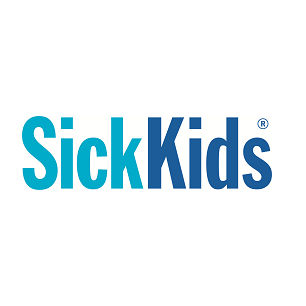预约演示
更新于:2025-05-07
Melpida
更新于:2025-05-07
概要
基本信息
药物类型 腺相关病毒基因治疗 |
别名 MELPIDA、Recombinant Adeno-associated Virus (Serotype 9) Encoding a Codon Optimized Human AP4M1 Transgene(CureSPG50)、Self-complimentary adeno-associated virus 9 gene therapy containing codon optimized human AP4M1(CureSPG50) + [1] |
靶点 |
作用方式 刺激剂 |
作用机制 AP4M1刺激剂(adaptor related protein complex 4 subunit mu 1 stimulants) |
在研适应症 |
非在研适应症- |
原研机构 |
非在研机构- |
权益机构- |
最高研发阶段临床3期 |
首次获批日期- |
最高研发阶段(中国)- |
特殊审评孤儿药 (美国) |
登录后查看时间轴
关联
3
项与 Melpida 相关的临床试验NCT06692712
Intrathecal Administration of MELPIDA (AAV9/AP4M1) for Hereditary Spastic Paraplegia Type 50 (SPG50): a Phase 3, Open-Label Trial with Matched Prospective Concurrent Control Arm
Phase 3, open-label study to assess the efficacy and safety of a single lumbar intrathecal administration of MELPIDA in individuals with Hereditary Spastic Paraplegia Type 50 (SPG50).
开始日期2025-03-01 |
申办/合作机构 |
NCT05518188
A Phase 1/2 Open-label Intrathecal Administration of MELPIDA to Determine Its Safety and Efficacy for Patients with Spastic Paraplegia Type 50 (SPG50) Caused by Mutation in the AP4M1 Gene.
MELPIDA is proposed for the treatment of subjects with SPG50 and targets neuronal cells to deliver a fully functional human AP4M1 cDNA copy via intrathecal injection to counter the associated neuronal loss. Outcomes will evaluate the safety and tolerability of a single dose of MELPIDA, which will be measured by the treatment-associated adverse events (AEs) and serious adverse events (SAEs). Secondarily, the trial will explore efficacy in terms of disease burden assessments.
开始日期2023-02-15 |
申办/合作机构  Elpida Therapeutics Elpida Therapeutics [+1] |
NCT06069687
A Phase 1 Open-label Intrathecal Administration of MELPIDA to Determine the Safety and Efficacy for Patients With Spastic Paraplegia Type 50 (SPG50) Caused by a Mutation in the AP4M1 Gene
This will be a first-in-human Phase I, open-label, single dose clinical study of MELPIDA administered intrathecally (IT) through a lumbar puncture (LP) to a single subject with confirmed pathogenic mutations in the Adaptor Related Protein Complex 4 Subunit Mu 1 (AP4M1) gene. The primary outcome will be the determination of the safety and tolerability of MELPIDA in patients with SPG50, based on development of toxicity.
The secondary outcome will be a preliminary exploration of efficacy of the treatment.
MELPIDA, is a recombinant serotype 9 adeno-associated virus (AAV) encoding a codon-optimized human AP4M1 transgene and will be administer to the patient via a single intrathecal infusion of 10 mL at 1E14 vg/mL for a total dose of 1E15 vg.
The total study duration is 5 years post dosing and the participant will be tested at screening/baseline (-28 to -7 days), return for dosing, and then follow-up visits post-dosing on Days 7 (+/-2), 30 (+/-2), 60 (+/-2), 90 (+/-14), 180 (+/-14), 270 (+/-14), 360 (+/-14), 540 (+/-14), and 720 (+/-14) days, then annually for the last 3 years.
The secondary outcome will be a preliminary exploration of efficacy of the treatment.
MELPIDA, is a recombinant serotype 9 adeno-associated virus (AAV) encoding a codon-optimized human AP4M1 transgene and will be administer to the patient via a single intrathecal infusion of 10 mL at 1E14 vg/mL for a total dose of 1E15 vg.
The total study duration is 5 years post dosing and the participant will be tested at screening/baseline (-28 to -7 days), return for dosing, and then follow-up visits post-dosing on Days 7 (+/-2), 30 (+/-2), 60 (+/-2), 90 (+/-14), 180 (+/-14), 270 (+/-14), 360 (+/-14), 540 (+/-14), and 720 (+/-14) days, then annually for the last 3 years.
开始日期2022-03-11 |
100 项与 Melpida 相关的临床结果
登录后查看更多信息
100 项与 Melpida 相关的转化医学
登录后查看更多信息
100 项与 Melpida 相关的专利(医药)
登录后查看更多信息
1
项与 Melpida 相关的新闻(医药)2024-02-29
Pictured: diverse group over colorful abstract background/Taylor Tieden for BioSpace
Rare diseases currently afflict 300 million people worldwide and 30 million people in the U.S. alone. However, 95% of these diseases lacked an FDA-approved treatment as of January 2023. One reason, industry leaders say, is cost.
A 2019 study estimated that orphan drug trials cost researchers $166 million per approved drug. Prices for drugs that hit the market in 2023 were 35% higher than those commercialized in 2022, a change that a Reuters analysis attributed to rare disease therapies that aren’t “big sellers” because of their limited target population. Pharmaceutical companies maintain that restricting drug prices will harm innovation, especially for rare diseases, but health economists argue it is possible to both lower prices and foster innovation by investing in companies and research.
On Rare Disease Day, BioSpace looks at some of these investments, as well as the status of the treatment pipeline and what is required to bring more treatments to the market.
Industry and Government Investment
There has been considerable recent investment in rare disease treatments—from small molecule drugs to antibodies and cell and gene therapies. In July 2023, Biogen acquired Reata Pharmaceuticals and its small molecule Friedreich’s ataxia drug Skyclarys for $7.3 billion. And according to the Alliance for Regenerative Medicine (ARM), around $11.7 billion was invested in cell and gene therapies worldwide in 2023, and five gene therapies were approved for rare disorders last year. Other industry players include Chiesi Ventures, which specifically invests in companies focused on rare diseases, and Deerfield Management, which in 2023, partnered with Invitae to develop genetic treatments for rare diseases.
Many early-stage investments in research and development come from the U.S. government. The Orphan Drug Act, passed by Congress in 1983, incentivizes companies to develop treatments for rare diseases using tax credits and grants.
State governments can play an important role as well. The California Institute for Regenerative Medicine (CIRM) funds research, clinical trials and drug development for a variety of rare conditions such as ADA-SCID, a very rare condition where patients lack virtually all immune protection from infectious bacteria, viruses and fungi. CIRM is a member of the Bespoke Gene Therapy Consortium (BGTC), a public-private partnership including the NIH, FDA, patient advocacy groups (PAG), venture funds and pharmaceutical companies. The consortium aims to streamline the regulatory process for adeno-associated virus (AAV) vector–based therapies and has acquired $97 million in commitments since it launched in 2021.
CIRM’s involvement has allowed the BGTC to address more rare diseases than it had originally planned, said P.J. Brooks, consortium co-chair and deputy director of the Division of Rare Diseases Research Innovation at the NIH’s National Center for Advancing Translational Sciences.
“[CIRM has] really stepped up and we’ve been able to develop a partnership with them that I think is quite novel because they are also a major funder of research,” Brooks told BioSpace.
Earlier this month, CIRM granted $4 million to Elpida Therapeutics, another BGTC member, to develop an AAV therapy for Charcot-Marie-Tooth disease type 4J, a rare, progressive neurologic disorder involving muscle weakness. CMT4J is one of eight rare diseases the consortium is prioritizing for clinical trials.
Elpida is “optimistic” it will be able to launch a clinical trial within the next year, CEO Terry Pirovolakis told BioSpace in an email. The company has registered a clinical trial to study the natural history of CMT4J.
Patient Groups Drive R&D, Investment
Patient advocate groups (PAG) also play a key role in supporting research for rare diseases. In addition to being experts on their conditions, they may also raise funds for studies and trials. In addition to reviewing research proposals and helping partners find patients for clinical trials, the National Organization for Rare Diseases (NORD) and its member organizations help raise funds for researchers, Pamela Gavin, the organization’s chief operating officer, recently told BioSpace. PAGs helped bring the first targeted therapies for progeria and Friedreich’s ataxia to the market.
Pirovolakis founded Elpida after his son was diagnosed with spastic paraplegia 50, a progressive neurological disorder that is also part of the BGTC portfolio. The company’s SPG50 drug Melpida is currently in clinical trials.
“Since treating my son, between CureSPG50 and Elpida Therapeutics, we've been able to treat three more children,” Pirovolakis noted. It is “undeniably a challenging period” for rare disease drug developers, he added, especially for those targeting conditions that affect children.
Although biotech investment in rare diseases increased between 2020 and 2021, investment decreased overall in 2022. Additionally, while children make up half of rare disease patients in the U.S., only a third of orphan drug indications approved between 2010 and 2018 targeted pediatric patients.
Brooks estimated that in the future, “entities that are different from what we think of as pharmaceutical companies” will be more involved in the commercialization of these drugs. He said novel business models that take advantage of the “platform capacity” of gene editing and gene therapy, for example, could be what ultimately brings forward drugs for “very, very rare diseases.”
A Healthy Pipeline
Several biopharma companies are on the case. In 2021, the Rare Disease Company Coalition launched to advocate for policies that will help bring more treatments to market. There are more than 700 rare disease treatments in the pipeline, according to the Pharmaceutical Research and Manufacturers of America (PhRMA). Large companies such as Takeda, Sanofi and Genethon are among the leaders, with each company possessing at least 10 investigational drugs.
And there were 1,329 ongoing cell and gene therapy trials involving rare diseases as of December 2023, according to data collected by ARM, with about 44% of those trials in Phase I. The same data indicate that later-stage trials are less likely to be sponsored by non-industry entities.
Brooks noted that one of the challenges in making rare disease treatments more accessible is actually getting them to market.
“There’s a big difference between [research] and then actually filing the license that will allow you to sell the drug,” he said. “There’s a whole . . . step in the regulatory process there that is a much bigger step than I was aware of, and taking that next step takes a lot of money.”
Pirovolakis noted that while there has been an increase in families pursuing treatments, there has been a decrease in companies focusing on these diseases and a greater number of programs being discontinued. “Currently, rare diseases affecting pediatric patients are severely underfunded, including in the realm of biotech investment,” he said. “To drive progress in treating these diseases, essential support from governments, philanthropists and the biotech investment community is urgently needed.”
Nadia Bey is a freelance reporter in North Carolina. Her work and contact information can be found at nadiabey.com.
并购临床研究基因疗法
100 项与 Melpida 相关的药物交易
登录后查看更多信息
研发状态
10 条进展最快的记录, 后查看更多信息
登录
| 适应症 | 最高研发状态 | 国家/地区 | 公司 | 日期 |
|---|---|---|---|---|
| 50型常染色体隐性遗传性痉挛性截瘫 | 临床3期 | - | 2025-03-01 | |
| 小头畸形 | 临床2期 | 美国 | 2023-02-15 | |
| 肌肉痉挛 | 临床2期 | 美国 | 2023-02-15 | |
| 截瘫 | 临床2期 | 美国 | 2023-02-15 |
登录后查看更多信息
临床结果
临床结果
适应症
分期
评价
查看全部结果
| 研究 | 分期 | 人群特征 | 评价人数 | 分组 | 结果 | 评价 | 发布日期 |
|---|
No Data | |||||||
登录后查看更多信息
转化医学
使用我们的转化医学数据加速您的研究。
登录
或

药物交易
使用我们的药物交易数据加速您的研究。
登录
或

核心专利
使用我们的核心专利数据促进您的研究。
登录
或

临床分析
紧跟全球注册中心的最新临床试验。
登录
或

批准
利用最新的监管批准信息加速您的研究。
登录
或

特殊审评
只需点击几下即可了解关键药物信息。
登录
或

生物医药百科问答
全新生物医药AI Agent 覆盖科研全链路,让突破性发现快人一步
立即开始免费试用!
智慧芽新药情报库是智慧芽专为生命科学人士构建的基于AI的创新药情报平台,助您全方位提升您的研发与决策效率。
立即开始数据试用!
智慧芽新药库数据也通过智慧芽数据服务平台,以API或者数据包形式对外开放,助您更加充分利用智慧芽新药情报信息。
生物序列数据库
生物药研发创新
免费使用
化学结构数据库
小分子化药研发创新
免费使用
